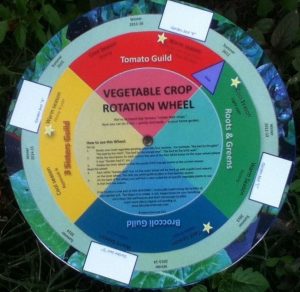What can crop rotation do for you and your garden?
 Do you need a powerful tool to help you with organic pest control AND maintaining soil fertility in your vegetable garden?
Do you need a powerful tool to help you with organic pest control AND maintaining soil fertility in your vegetable garden?
Crop rotation means following a conscious system of planting in which related plants are grown in different spots year after year. It’s fairly easy to do, and as a side benefit, it can help to expand the diversity of your harvests.
Crop rotation for soil fertility
Some of humanity’s favorite vegetable plants (for example, the squash family) are nutrient-hogs. They demand a lot from the soil and can leave the soil quite depleted.
Other plants (the legume family) give back — they actually help restore and replenish soil nutrients. In crop rotation we use these characteristics to our advantage.
In a simple crop rotation, you might plant peas or beans before the squash family to assure highly fertile soil for great harvests. And you might plant peas or beans again after the squash family, to prepare the soil for the next set of crops. Crop rotation is one of several soil-building techniques in our arsenal.
Crop rotation for pest control
Many pests and plant diseases are soil residents. Many of these beasties spend part of their life cycle in the soil, or leave eggs or spores in the soil to bridge from one generation to the next.
Additionally, most pests and plant diseases are host-specific — they prefer to feast on one particular type of plant and its relatives.
We can leverage these characteristics by using a system of crop rotation to help keep the beasties under control.
As the new generation of beasties hatches, if their favorite dinner plant isn’t growing in the area where they’re hatching, they go hungry. An entire generation starves.
If that favorite dinner plant isn’t grown in that spot for two years, or even three, you’ve significantly reduced the pest population in your garden. Without pesticides. Simply by being conscious about what you plant where and when.
To make your planning easier, I developed the Vegetable Crop Rotation Wheel. It gives you an easy “plug and play” system for a diverse food garden, with a four-year crop rotation.
More on crop rotation …

